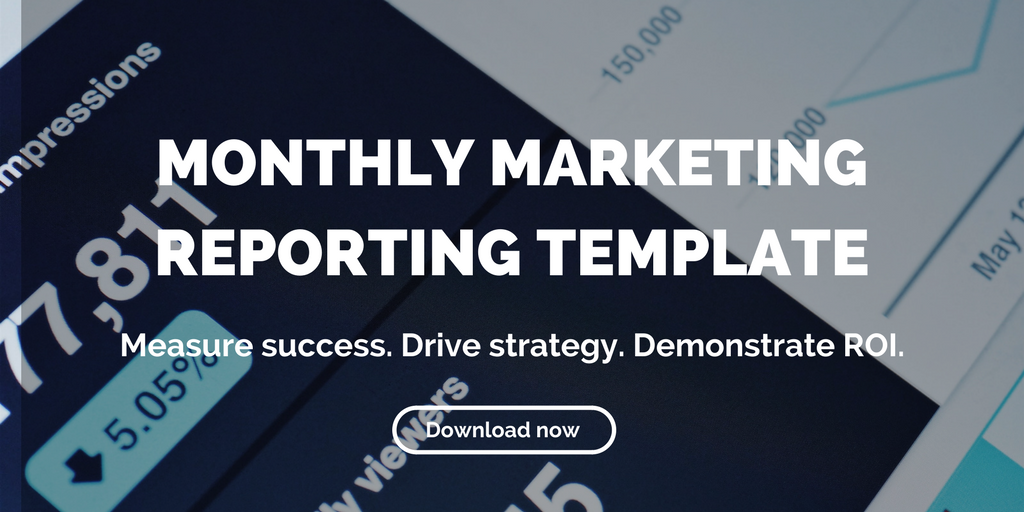Your search results for "Analytics"

The Metrics You Should Be Measuring in Real Estate Marketing (Hint: Not Vanity Metrics)
Don’t waste your time reporting on vanity metrics, which won’t tell you whether you’ve achieved your ROI.
We all want to see the fruits of our labors. Whether renting a new property or launching a social media campaign, we look for instantaneous numbers that will affirm we made the right choices. But here’s the problem: not all metrics are created equal.
So-called vanity metrics are measurements that have no bearing on your bottom line but can give you an inflated sense of success. Generally, they are easy to calculate but are influenced by too many factors — and are too vulnerable to random external events — to be reliable.
Website visits and number of subscribers are two classic examples. A spike in homepage hits may be the result of your marketing efforts, or it may be because of ghost spam. (Or both.) Regardless, more visits do not necessarily correlate to increased revenue — just more visits. In the same vein, having 100,000 email subscribers means nothing if only 1% are opening them. You actually could be losing money in terms of resources allocated if the emails aren’t helping drive sales.
Investment vs. vanity metrics
That’s why it’s crucial to focus on return on investment instead of vanity metrics. You could waste hours reviewing a hundred different analytics that tell you nothing about how revenue was affected by a particular effort. Or, worse, you could use vanity metrics to justify decisions that don’t achieve their ROI.
As a simplified example: say you spend $1,000 on a display ad for a new apartment complex targeting established professionals on a local news website, and your analytics report that 100 people clicked through. This sounds like success! But don’t celebrate just yet. When you dig past the vanity metric, you find an extremely high bounce rate. That means most of those click-throughs left your site immediately, neither engaging with your property nor moving any closer to becoming a tenant. In fact, you find that only one click-through converts. Was it worth paying $1,000 for this one potential tenant? Probably not.
But say you ran another $1,000 display ad, one that targets a younger audience than you think your property fits. Only 20 visitors clicked through, which sounds less successful than the other ad. But when you follow those 20 click-throughs, you find that 5 ended up renting units, meaning the ad pays for itself many times over. You’ve also learned that perhaps a younger audience is more suited than you thought to your property. The ROI proves that the vanity metric was quite misleading in this case.
Metrics that help you make decisions
Lean-startup pioneer Eric Reis, who coined the term vanity metrics, said, “The only metrics that entrepreneurs should invest energy in collecting are those that help them make decisions.” In other words, measure the things that will tell you if an effort was profitable so you know where to put your time and money.
While vanity metrics tell you nothing about your bottom line, ROI can help you determine whether it was worth spending your resources in a particular way. This is extremely useful on platforms like blogs and social media, where things are constantly changing. Using ROI as a litmus test, you can keep experimenting and making sure you’re using these tools effectively. Tracking a vanity metric like number of followers, which is likely to build over time regardless, gives you no indication of which experiments were successful and which weren’t.
Your resources are limited, so it’s crucial to evaluate your efforts with meaningful numbers that illustrate their effect on your bottom line. Calculating ROI might take some time — both in the few extra minutes to do the math and the amount of time that needs to pass before all the data is available — but that number will be infinitely more valuable to you than any vanity metric on your Google Analytics report.
Related posts:
- Social Media Can Be a Strategic Weapon in Real Estate Marketing
- How Pay-Per-Click Helped This Property Get 54 Leads
- Learn How Content Marketing Increased Real Estate Sales by 37% in 90 Days
Your search results for "Analytics"

Start Your Property’s Social Media Program in 6 Steps
When launching a property’s social media marketing program, make sure you’ve thought through strategy, content, and audience.
Social media marketing for real estate is a must-do. The reality is that’s where the average American is spending his/her free time — nearly 2 hours a day, according to a recent study. Using platforms like Facebook, Twitter, and YouTube to market your property, you can:
- engage potential buyers
- build brand awareness
- elevate brand position within the market
- decrease cost per lead
- increase occupancy or sales
- improve retention
- and more
Sounds great, right? But where do you start? Which platforms should you use? How will you ever convince your boss that this is a valuable use of your time?
Starting your property’s social media program can seem like an intimidating task, especially if company leadership is skeptical of the benefits. Here are six steps to launching a real estate social media program that will grow your business to its full potential.
6 steps to start your property’s social media program
1) Speak in the right terms.
Convincing management that you want your team to spend more time on social media to gain “followers” or get “shares” could be a hard sell — even though that kind of engagement is key in real estate sales and rentals. To win support, focus your argument around the factors that are most important to them. Lead generation, lead nurturing, conversions, sales, ROI, profits: this should be the vocabulary with which you approach this conversation.
2) Create a strategy — and put someone in charge.
Only 11% of companies without a documented content marketing strategy find their efforts to be successful, compared to 60% of companies with a strategy in place. And that number rises to 86% when the company designates someone to lead the strategy.
Develop a content marketing strategy — inclusive of social media — that aligns with your goals for the property (e.g., more visits to the website, increased occupancy, better retention rates). And whether someone on your team heads up execution or you outsource that responsibility, the leader should continually monitor analytics and tweak the strategy accordingly to ensure the property’s social media program is meeting the designated marks.
Which brings me to…
3) Determine which analytics to track.
In real estate social media, shares, likes, and impressions speak to your brand exposure, so they’re important to track. But it’s important that you’re looking at more than just these surface metrics. (Read more about so-called “vanity metrics” here.) Leads generated, conversion rates, sales, and ROI are going to tell you if your efforts are helping your bottom line. If you have a good, flexible strategy in place, these metrics will help you adjust your efforts to ensure you’re achieving your business objectives.
4) Develop quality content.
Twenty-seven million pieces of content are shared every day — and a large portion of it is crap. A social media presence could be pretty pointless unless you’re not using it in a way that your followers find valuable. Good, quality content is the alpha and the omega, the key to engaging your followers.
One of the biggest mistakes real estate marketers make is using social channels to push a blatant sales pitch. You’ll quickly lose your audience that way. Your property’s social media should be about engaging target buyers or tenants, building brand awareness, and offering valuable and interesting information.
5) Decide which channels are right for your business.
Who are you trying to reach, and what are you trying to tell them? These are good questions to ask when trying to determine which platforms will comprise your social media program. You need to know who your target buyer/tenant is, and you need to know what kind of information you’re going to offer them.
There’s a wealth of data out there about who uses which channels and when. Most social media platforms also have their own built-in analytics tools that can help you determine the best time for engagement with your followers.
Another thing to consider: You’ll want to choose channels that you’ll be able to maintain regularly and which play to your strengths. If you don’t have the time, skill, or interest in taking regular photographs of things around your property, for example, Instagram probably isn’t for you. Remember, you’ll likely want to work through several different channels to reach a maximum number of potential customers.
6) Follow your competitors.
Following your competitors is a great way to stay up to date on what they’re doing, especially if you don’t have a ton of time or money for competitive research. And when I say “follow,” I don’t mean “copy or imitate.” I mean subscribe to their blogs, engage with them on social media, and like and share their content that you find meaningful for your audience. This way, you become part of the local conversation happening online, and you know exactly what your potential buyers and tenants are seeing from (and how they’re reacting to) your competitors.
Related posts:
- The Metrics You Should Be Measuring in Real Estate Marketing
- 6 Marketing Tasks Real Estate Marketers Can Outsource
- Social Media Can Be a Strategic Weapon in Real Estate Marketing
Your search results for "Analytics"

Top 5 Real Estate Blog Posts of 2019 … So Far
Here are our most-viewed real estate blog posts from this year, covering topics from social media to the latest trends in digital marketing.
Throughout the year, we regularly write blog posts to help our readers stay on top of the latest news and happenings in the real estate industry, particularly in regard to digital marketing. We hope these posts provide insight, tips, and insider information on how the consistent publication of quality content can help you edge ahead of the competition.
We’ve covered some great stuff this year, from new trends (like automation) to questions that clients ask year after year (like how real estate brands use social media). Here’s a look at our most popular posts so far this year.
Top real estate blog posts from 2018 (so far)
1. 5 Tips to Step Up Your Real Estate Social Media Marketing
Increasingly, traditional marketing tactics are giving way to newer methods, and inbound marketing is taking the place of outbound. We’ve said it before, and we’ll say it again: real estate and social media are a match made in heaven. Here are five tips to boost your real estate social media marketing efforts. Read more
2. Google Analytics for Real Estate Marketers – 4 Steps to Get Started
When it comes to gaining insights into real estate leads, Google Analytics is one of the most powerful tools out there right now. The data that Google Analytics for real estate provides gives you invaluable insights into how your audience is interacting with your content, as well as how your content is performing over time. Read more
3. 6 Simple Tools for Creating Animated Real Estate Marketing Videos
Savvy real estate marketers are jumping on the video bandwagon, but the process can still be intimidating. Creating an animated image, GIF, or video can sound impossibly difficult — particularly if you’re over the age of 15! But in reality, there are plenty of tools that make creating these items not only simple but cost–effective as well. Read more
4. The Role of Social Media in Luxury Real Estate Marketing
In the ultra-competitive field of luxury real estate marketing, social media can be your secret weapon. Real estate is inherently personal, even at the corporate and luxury levels, and marketers can effectively use social media to cultivate productive relationships with leads. Here are four ways social media can boost your luxury real estate marketing efforts. Read more
5. Top Real Estate Marketing Trends 2019
Real estate is a competitive and ever-changing industry. Just when your business settles into a successful routine, new marketing tactics and trends can throw you a curve ball. But being aware of the forces shaping the industry is the best way to hit your marketing efforts out of the park this new year. Here are the four top real estate marketing trends that we see coming in 2019. Read more
For more useful tips, return to this space. We post twice a week, every week of the year.
Related posts:
- Using Content Marketing to Market and Sell Luxury Real Estate
- 10 Quick Ways to Grow Brand Awareness
- 5 Real Estate Instagram Accounts You Should be Following
Your search results for "Analytics"

What are Google Sitelinks and Why Real Estate Marketers Need to Know About Them
Google sitelinks boost a website’s visibility and credibility, and they help users get right to what they’re looking for. Here’s what real estate marketers need to know about them.
Do you ever wonder if visitors to your website are going right to what they’re looking for? For example, if a potential buyer does a google search for properties in your area, will he or she be taken directly to listings, or need to navigate through your website first?
This is where Google sitelinks come in. These links are shortcuts, or a table of contents, designed to help users navigate to the right part of your website quickly, rather than needing to load the homepage first. Here’s why real estate marketers need to know about Google sitelinks, and how they can help market your properties.
How do they work?
If you frequent Google (and who doesn’t?), it’s likely that you’ve seen sitelinks in action. Typically, if a site is the #1 search result from a query, sitelinks will appear below the listing. To create the links, Google’s algorithm analyzes your website’s structure and content. It finds the most popular and useful content, and lists it as shortcuts below the search result.
These shortcuts “deep link” to pages within your site, like your blog, pages for specific properties, other content offers, etc. If you use Google AdWords, you’ll recognize sitelinks as very similar to the links that appear in ads—but in this case, Google chooses what links get featured.
What’s so great about Google sitelinks?
There are all kinds of benefits if you can manage to get sitelinks to appear when your website pops up in a search. In fact, having sitelinks is an excellent indicator of a website with a healthy SEO. It means that your site is properly constructed to allow Google’s algorithm to mine and sort its content thoroughly, and feature key components.
Sitelinks help to increase the chances of your most effective pages getting more visibility. Since the algorithm that sets up the table of contents for your website factors in popularity, the content on your site that has historically performed best will continue to get a boost. In the same vein, having those most effective pages be your web calling card instantly lets your audience know what you have to offer. Sitelinks helps put an emphasis on your premium content and properties.
As you might guess, Google sitelinks can significantly improve your click-through rate. Again, since your most popular pages end up front and center, there’s a greater chance that searchers will click them right away. You also get a free enhancement of your credibility, just from the fact that with sitelinks, your site takes up more space among search results, drawing the eye.
How can I get sitelinks?
Since there aren’t any official guidelines from Google on how to get sitelinks, we need to extrapolate some best practices. Here are five tips to get you started:
- Sign up for Google Analytics, and be sure to add their tracking code to your website.
- Is your Site Title unique and descriptive? Make sure it accurately reflects your business and properties, and that no one else is using it.
- Create a unique and descriptive Meta Description for each piece of content.
- Organize your main navigation menu—keep it simple. Keep your most important pages featured as the menu items, with related pages in dropdowns.
- Create cross links to and from your website’s most important pages.
Related posts:
- How to Measure Social Media ROI with Google Analytics for Real Estate
- Paid Digital Advertising: A Beginner’s Guide for Real Estate Marketers
- Learn How Content Marketing Increased Real Estate Sales by 37% in 90 Days
Your search results for "Analytics"

5 Effective Ways to Use Instagram for Your Luxury Real Estate Brand
With its highly visual platform and growing user base, Instagram is a natural fit for real estate marketing. Here are five ways to make Instagram work for your luxury real estate brand.
Highlights:
- Instagram posts should reflect your luxury real estate brand and maintain the overall tone you set through other marketing efforts.
- Successful brands on Instagram pay close attention to how their posts reflect their brand’s message.
- Hashtags allow your posts to be seen by users outside of your circle of followers, so using relevant, industry-specific hashtags is key in reaching new audiences.
Looking to engage with new audiences and connect with your target market? Instagram is the perfect platform for luxury real estate brands looking to expand their reach. In fact, engagement on Instagram is ten times higher than it is for Facebook, and the demographic is substantially more affluent—making it a no-brainer for luxury real estate.
But to get the most out of this highly visual platform, it’s important for real estate marketers to post the right kind of content. The content should reflect your brand and maintain the overall tone you set through other marketing efforts (i.e. your website, blog, etc.). Marketers who want to reap the benefits of marketing on Instagram need to do more than just post appealing pictures with fun filters. Here are five effective ways to make sure you’re getting the most out of your marketing efforts on Instagram.
5 effective ways to market your luxury real estate brand on Instagram
1. Focus on your target audience
Who are you trying to reach with your Instagram posts? Trying to post compelling content for an unidentified audience is like taking a shot in the dark. Knowing who your ideal buyer or tenant is allows you to create content that is informative, educational, and entertaining to that specific person.
When creating (or curating) content for Instagram, the more detailed you can be with your buyer persona(s), the more specific and effective your content can become. The personal connection is particularly crucial for real estate buyers, and understanding your target audience is key to making that connection.
2. Cultivate your brand message
For luxury real estate developers and property management companies, branding is key for target buyers (or tenants) to know about your properties and understand the lifestyle that the property offers. Creating consistent brand messaging that reflects the tone and voice of your marketing collateral helps audiences grow brand awareness.
Successful brands on Instagram pay close attention to how their posts reflect their brand’s message. Posts have an overarching theme that mirror the overall brand image. Images should do more than just promote your properties. They should add value to your luxury real estate brand’s unique story.
3. Use CTAs
Conversions, revenue, business, and profit—they all depend on the Call to Action. Don’t just post interesting content, give your followers a chance to do something with your posts. CTAs are key to the success of any online marketing initiative, including Instagram posts. Try adding CTAs to each of your posts to encourage audiences to “take an action”. Providing opportunities for followers to visit your website or download valuable resources will boost conversion rates.
4. Make the most of your hashtags
Hashtags allow your posts to be seen by users outside of your circle of followers, so using relevant, industry-specific hashtags is key in reaching new audiences. Hashtags automatically function as links, making your posts easily searchable and available to users looking for specific hashtags. For example, if a user interested in San Diego real estate clicks on #sdhomesforsale, all public posts labeled with that hashtag will show up.
As you start experimenting with adding hashtags to your social media posts, make sure to:
- Use relevant terms.
- Research trending topics as you chose your content.
- Create your own hashtags to match your luxury real estate brand.
- Make sure the audience setting on your posts is “public.”
5. Check your analytics
Many real estate businesses struggle with measuring ROI on social networks. Even for seasoned digital marketers, the collection of data is one of the most daunting tasks. But it’s important to gain insight into the who, when, and where of your Instagram traffic.
Use Instagram Insights to learn more about the people interacting with your luxury real estate brand on Instagram. You can also see which posts your audience sees and engages with the most, as well as a breakdown of demographics. Analyzing your posts will help determine what’s working for your brand and where changes need to be made.
Need help getting started with optimizing your digital marketing efforts? We’re here to help.
Related posts:




